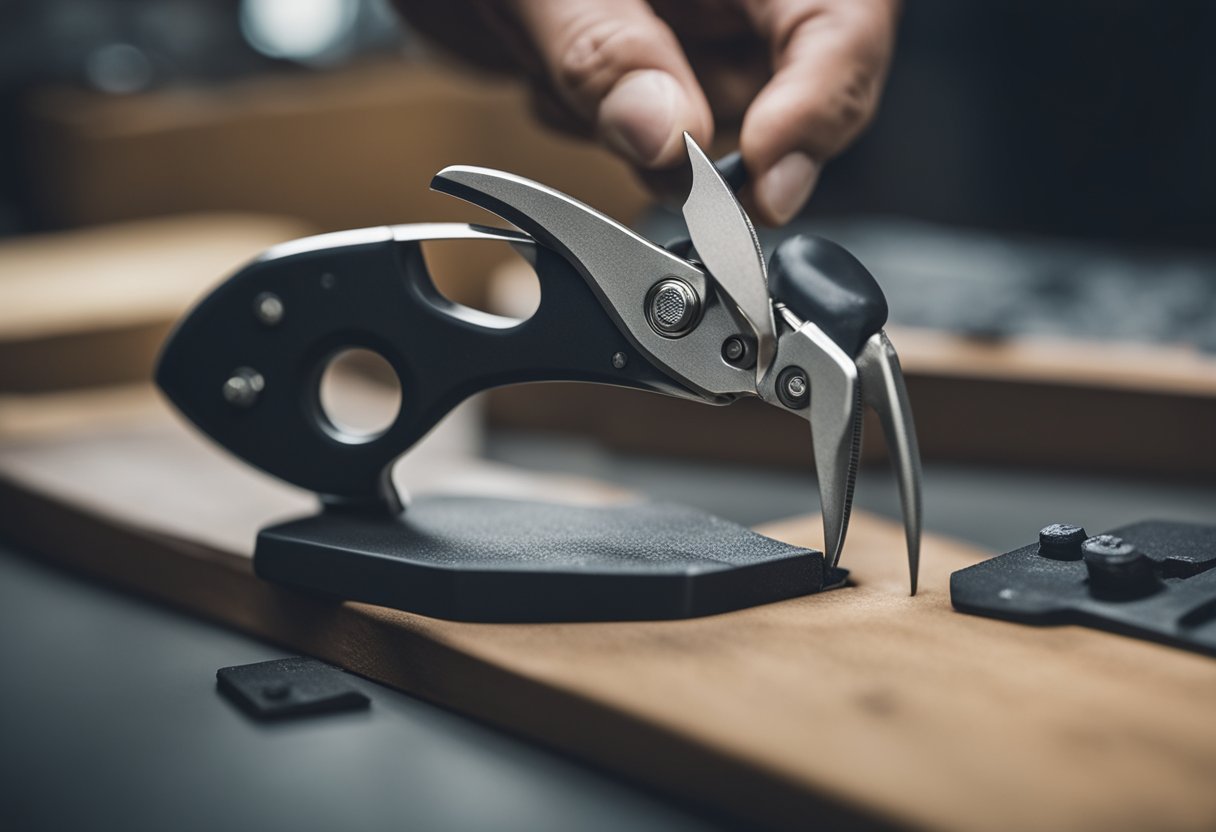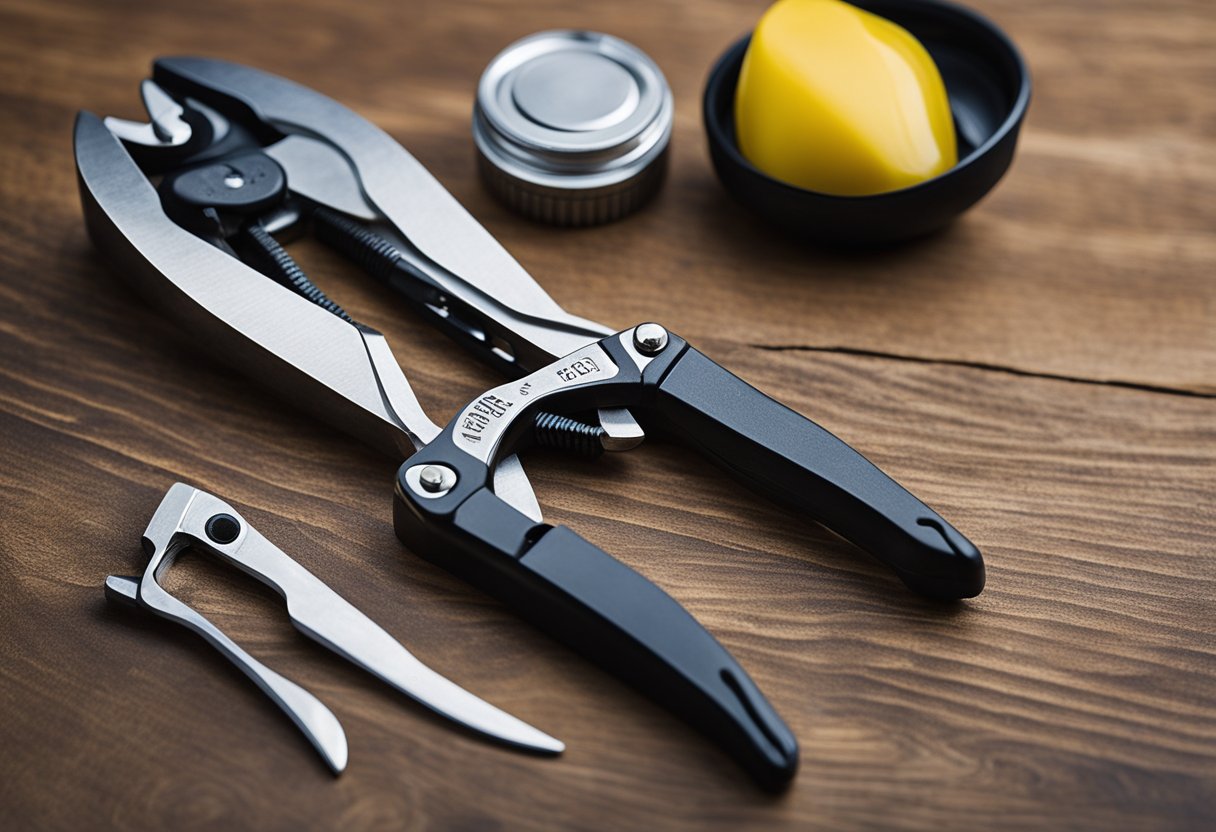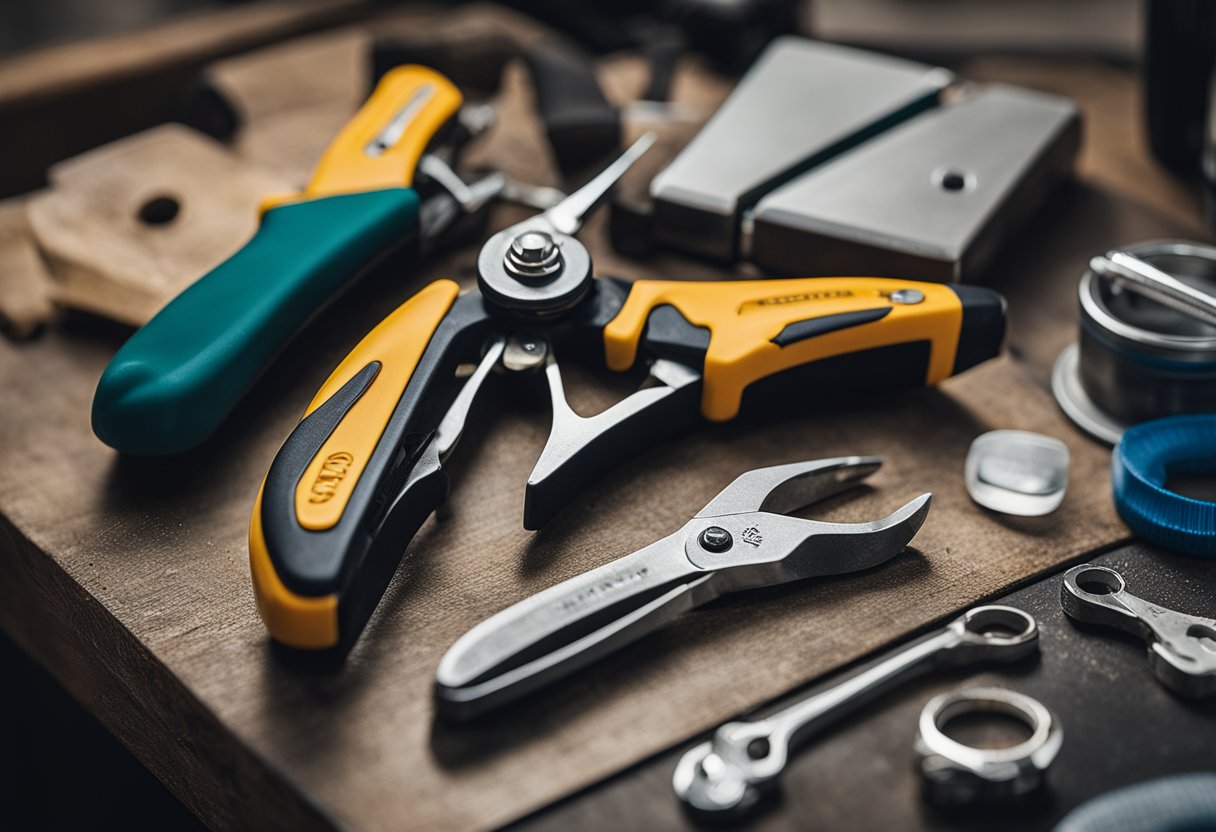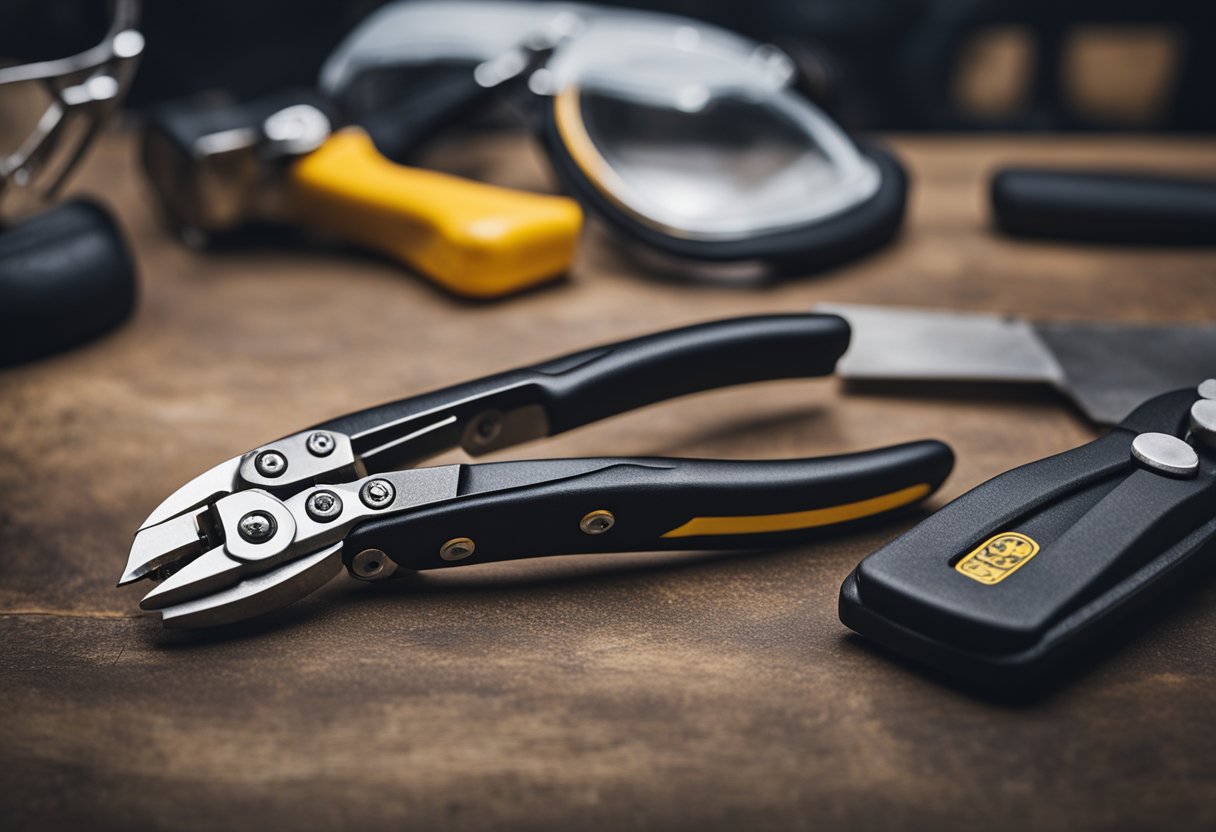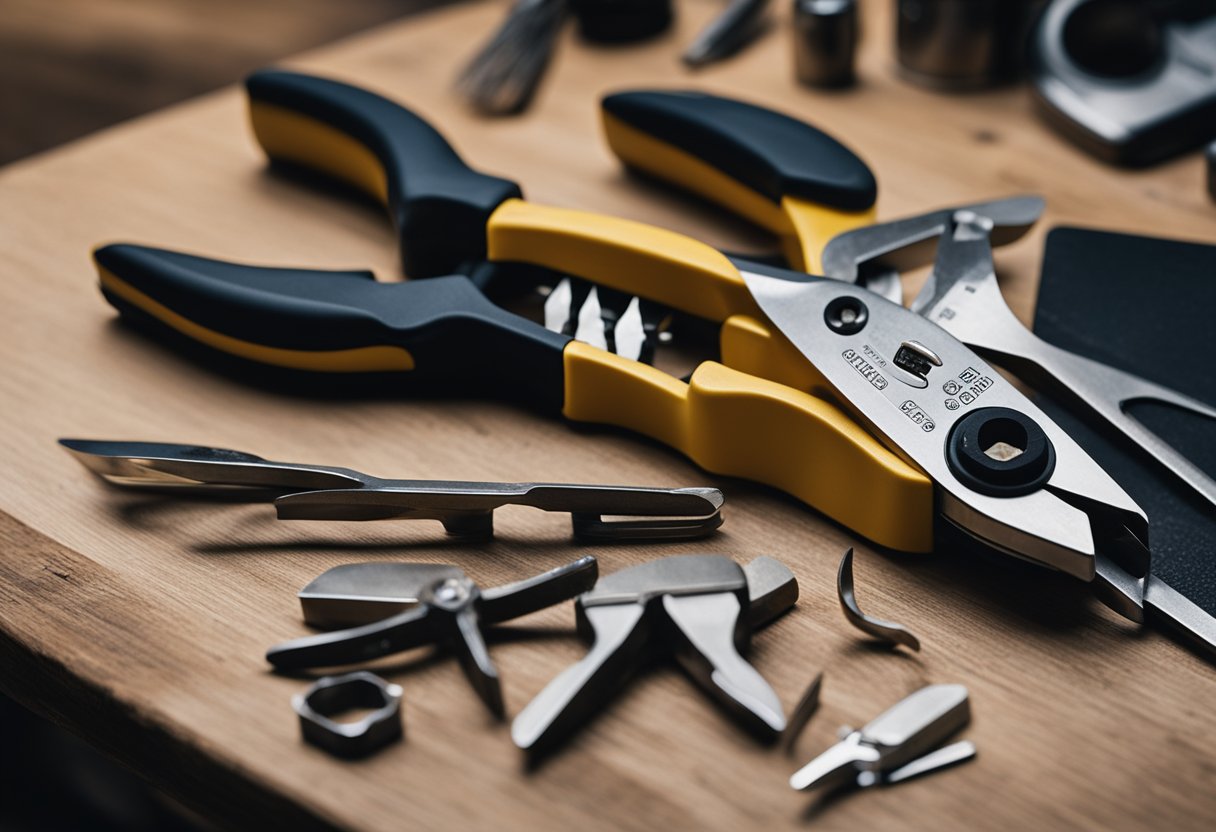I have sharpened linesman pliers many times, and I know that it can be a tricky process. Linesman pliers are a versatile tool that is commonly used in electrical work, but they can also be used for other applications. They are designed to cut, grip, twist, and bend wires, but over time, the cutting edges can become dull and less effective.
Sharpening linesman pliers is necessary to ensure that they perform optimally. Dull pliers can make your work more difficult and time-consuming, and they can also damage the wires you are working on. In this article, I will share with you my step-by-step guide on how to sharpen linesman pliers and provide you with tips on how to maintain them properly. I will also answer some frequently asked questions about linesman pliers and their usage.
Key Takeaways
- Sharpening linesman pliers is necessary to ensure their optimal performance.
- Proper preparation, tools, and technique are critical for effective sharpening.
- Regular maintenance and care of linesman pliers are important for their longevity and safety.
Understanding Linesman Pliers
https://www.youtube.com/watch?v=w-d-0cCDffQ&embed=true
As an electrician, one of the most important tools you need in your toolbox is a pair of linesman pliers. Linesman pliers are a type of combination pliers that are specifically designed for cutting, gripping, and twisting wires. They are an essential tool for any professional electrician.
Linesman pliers are made of high-quality materials such as steel, which makes them sturdy and durable. The handles are usually coated with a non-slip material such as rubber to provide a firm grip. The cutting edges of the pliers are sharp and precise, allowing you to cut through wires cleanly and quickly.
When it comes to tools, linesman pliers are a must-have for any electrician. They are versatile and can be used for a variety of tasks, from cutting wires to twisting them together. They are also great for gripping and holding wires in place while you work on them.
As a professional electrician, having a good pair of linesman pliers is essential. They are an investment that will last you a long time, and they will make your job much easier and more efficient.
In conclusion, linesman pliers are an essential tool for any electrician. They are made of high-quality materials, are versatile, and can be used for a variety of tasks. As an electrician, investing in a good pair of linesman pliers is a wise decision that will make your job easier and more efficient.
Why Sharpening is Necessary
https://www.youtube.com/watch?v=ri_TR-ax7yI&embed=true
As a professional electrician, I know the importance of having sharp cutting tools. Linesman pliers are one of the most commonly used cutting tools in the electrical industry. These pliers are designed to grip and cut wires, but over time, the cutting edges can become dull and ineffective. This is why it’s necessary to sharpen linesman pliers regularly.
When the cutting edges of linesman pliers become dull, they can cause damage to the wire. Dull cutting edges can also make it difficult to cut through wires, which can slow down your work and cause frustration. By sharpening your linesman pliers, you can ensure that they are always working at their best.
Sharpening your linesman pliers can also extend their lifespan. When the cutting edges are dull, you may be tempted to use more force to cut through wires. This can cause the pliers to become damaged over time. By sharpening the cutting edges, you can reduce the amount of force needed to cut through wires, which can help to prolong the life of your pliers.
In addition to improving the performance of your linesman pliers, sharpening them can also improve your safety. Dull cutting edges can cause wires to slip out of the pliers, which can lead to injury. By sharpening your pliers, you can ensure that they are gripping wires securely, which can reduce the risk of injury.
Overall, sharpening your linesman pliers is a necessary task that should be done regularly. It can improve the performance of your pliers, extend their lifespan, and improve your safety on the job.
Preparation for Sharpening
Before sharpening your linesman pliers, it is essential to prepare them properly. This section will provide you with a few tips that will help you get started.
Firstly, you need to inspect your pliers for any signs of damage or wear and tear. Check the edges of the blades and jaws for nicks, chips, or corrosion. If you find any damage, it is best to replace the pliers instead of sharpening them. Sharpening damaged pliers can cause further damage and make them unsafe to use.
Once you have inspected the pliers and determined that they are suitable for sharpening, you need to clean them thoroughly. Use a wire brush to remove any rust or debris from the blades and jaws. You can also use a cloth to wipe the pliers down and remove any dirt or grime.
It is important to note that sharpening pliers can create metal filings that can be dangerous if they get into your eyes. Therefore, it is recommended to wear safety goggles while sharpening your pliers.
In addition to safety goggles, it is also essential to follow proper safety precautions while sharpening your pliers. Always grip the pliers firmly and securely while sharpening them. Use a sharpening tool that is appropriate for the pliers, such as an emery board or file tool. Make sure to apply the appropriate pressure while sharpening to ensure a clean cut.
By following these preparation tips, you can ensure that your linesman pliers are ready to be sharpened safely and effectively.
Sharpening Tools and Materials
https://www.youtube.com/watch?v=DhLNQeZalJI&embed=true
When it comes to sharpening linesman pliers, having the right tools and materials is essential. Here are some of the key items you’ll need:
Sharpening Stone
A good quality sharpening stone is essential for sharpening linesman pliers. You can use a whetstone or honing stone to sharpen the cutting edges of the pliers. Make sure to use machine oil or another lubricant to prevent the stone from becoming clogged with metal filings.
File
A file is another important tool for sharpening linesman pliers. You can use a diamond file or an emery board to remove any burrs or nicks from the cutting edges of the pliers. Make sure to work slowly and evenly to maintain the original angles of the pliers.
Vice or Vise
A vice or vise is useful for holding the pliers steady while you work on them. You can use a bench vice or a grip vice to hold the pliers in place while you sharpen them.
Grinding Wheel
If your pliers are severely blunt or damaged, you may need to use a grinding wheel to reshape the cutting edges. Be careful not to overheat the pliers, as this can damage the temper of the metal.
Rotary Tool
A rotary tool, such as a Dremel, can be used to sharpen small items or hard-to-reach areas of the pliers. Make sure to use the tool in a diagonal position to maintain the original bevel of the cutting edges.
By using these tools and materials, you can sharpen your linesman pliers and keep them in top condition for years to come.
Step-by-Step Sharpening Guide
https://www.youtube.com/watch?v=oBBJGAprynQ&embed=true
Sharpening your linesman pliers is a simple process that can be done with a few basic tools. I will walk you through the process step-by-step to ensure you get the best results.
Step 1: Clean the Pliers
Before you start sharpening your linesman pliers, it’s essential to clean them properly. You can use soap and water to remove any dirt or debris that may interfere with the sharpening process. Once cleaned, rinse them with water and dry them with a clean cloth.
Step 2: Secure the Pliers
To sharpen your linesman pliers, you need to secure them in place. You can use a vise or clamp to hold them in place while you work on them. Make sure the pliers are tight and secure before you begin sharpening.
Step 3: Choose the Right Tool
There are several tools you can use to sharpen your linesman pliers, including a file, sharpening stone, or honing stone. Choose the tool that works best for you based on your experience and the condition of your pliers.
Step 4: Sharpen the Pliers
Start by sharpening the original angles of the pliers. Hold the tool at the same angle as the original bevel, and use a light touch to sharpen the blade. If you’re using a file, make sure to work slowly and evenly to avoid creating any new problems.
Step 5: Check Your Progress
After you’ve sharpened the pliers, check your progress by running your fingers along the blade’s edge. If you feel any rough spots, continue sharpening until the blade is smooth.
Step 6: Polish the Pliers
Once you’re satisfied with the sharpness of your pliers, you can polish them using an electric polish tool or honing stone. This will help to remove any burrs or rough spots and give your pliers a smooth finish.
Sharpening your linesman pliers is a simple process that can be done with a few basic tools. With this step-by-step guide, you can ensure your pliers are sharp and ready for any job.
Post Sharpening Care and Maintenance
After sharpening your linesman pliers, it is important to take good care of them to ensure they remain sharp and in good working condition. Here are a few tips on how to maintain your pliers:
Oil and Clean Cut
To prevent rust and corrosion, it is recommended to apply a thin layer of machine oil to the pliers after each use. This will also help to keep the pliers lubricated and working smoothly. Additionally, to ensure a clean cut, it is important to wipe the blades with a clean cloth after each use.
Maintenance and Gloves
Regular maintenance is key to ensuring your pliers last a long time. It is important to inspect them regularly for any signs of wear and tear, and to replace them if necessary. When working with pliers, it is recommended to wear gloves to protect your hands from sharp edges and metal filings.
Safety Precautions and Storage
When not in use, it is important to store your pliers in a safe and secure location to prevent damage or injury. It is also important to keep them away from children and pets. Additionally, it is important to take the necessary safety precautions when using pliers, such as wearing eye protection and keeping your fingers away from the blades.
Soapy Water and Leather
To clean your pliers, it is recommended to use warm soapy water and a soft-bristled brush. Be sure to dry them thoroughly after cleaning to prevent rust and corrosion. Additionally, using a leather strop or honing compound can help to maintain the sharpness of the blades.
Good Quality and Insulated Handles
Investing in a good quality pair of linesman pliers with insulated handles can help to prevent hand fatigue and provide a more comfortable grip. Insulated handles also provide an added layer of safety when working with live wires.
By following these tips, you can ensure that your linesman pliers remain sharp and in good working condition for years to come.
Safety and Precautions
When sharpening linesman pliers, it is important to take certain safety precautions to avoid any injuries. As a DIYer, I always wear gloves and safety goggles to protect my hands and eyes from any flying metal fragments. I recommend using leather gloves for extra protection.
Before beginning the sharpening process, make sure the pliers are securely clamped in a vise or clamp. This will prevent the pliers from slipping and causing any accidents.
When using a file to sharpen the pliers, it is important to work slowly and evenly to avoid creating any new problems. It is also important to use the correct file for the job. A single-cut file should be used for sharpening the cutting edges of the pliers, while a double-cut file should be used for removing any burrs.
In addition to these precautions, it is important to keep the work area clean and free of any clutter. This will prevent any accidents or injuries caused by tripping over tools or debris.
By taking these safety precautions, you can ensure that your sharpening process goes smoothly and without any accidents.
Other Applications of Sharpened Pliers
Sharpened pliers are not only useful for cutting wires and cables, but they can also be used for a variety of other tasks. Here are some examples of other applications of sharpened pliers:
-
Nails and Staples: Sharpened pliers can be used to pull out nails and staples from wood or other materials. The sharp edges of the pliers can easily grip the head of the nail or staple and pull it out without damaging the surrounding material.
-
Tile: Sharpened pliers can be used to cut and shape tiles. The sharp edges of the pliers can easily score the surface of the tile, allowing it to be broken along the scored line.
-
Paper: Sharpened pliers can be used to cut paper or cardboard. The sharp edges of the pliers can easily slice through the material, making it a useful tool for cutting out shapes or trimming edges.
-
Bolts: Sharpened pliers can be used to grip and twist bolts. The sharp edges of the pliers can easily grip the head of the bolt, allowing it to be turned and tightened or loosened.
-
Wood: Sharpened pliers can be used to cut and shape wood. The sharp edges of the pliers can easily score the surface of the wood, allowing it to be broken along the scored line.
-
Plastic: Sharpened pliers can be used to cut and shape plastic. The sharp edges of the pliers can easily slice through the material, making it a useful tool for cutting out shapes or trimming edges.
-
Leather: Sharpened pliers can be used to cut and shape leather. The sharp edges of the pliers can easily slice through the material, making it a useful tool for cutting out shapes or trimming edges.
-
Copper and Aluminum: Sharpened pliers can be used to cut and shape copper and aluminum. The sharp edges of the pliers can easily slice through the material, making it a useful tool for cutting out shapes or trimming edges.
-
Furniture: Sharpened pliers can be used to remove staples or nails from furniture upholstery. The sharp edges of the pliers can easily grip the head of the staple or nail and pull it out without damaging the surrounding material.
In conclusion, sharpened pliers are versatile tools that can be used for a variety of tasks beyond cutting wires and cables. With the right technique and care, sharpened pliers can last for years and provide reliable performance for all your cutting needs.
Frequently Asked Questions
https://www.youtube.com/watch?v=VvxGqg9mRIw&embed=true
What is the best way to sharpen linesman pliers?
The best way to sharpen linesman pliers is to use a sharpening stone or a diamond file. You can also use an emery board or a knife sharpener for light rust or corrosion. Make sure to position the pliers handles securely along with the jaws directing upwards to give you full access to the cutting blades.
Can you sharpen end cutting pliers?
Yes, you can sharpen end cutting pliers using the same methods as sharpening linesman pliers. The key is to make sure the pliers are securely positioned and that the cutting edges are facing up.
How do you sharpen jewelry cutters?
Jewelry cutters can be sharpened using a sharpening stone or a diamond file. Make sure to position the cutters securely and that the cutting edges are facing up. Use light pressure to draw the stone or file across the edge in a smooth, even stroke. Repeat the process several times on each side of the jaw.
What tools do I need to sharpen linesman pliers?
To sharpen linesman pliers, you will need a sharpening stone or a diamond file, an emery board or a knife sharpener, and a vise or clamp to securely position the pliers. You can also use locking pliers for added security while working.
Is it possible to sharpen linesman pliers at home?
Yes, it is possible to sharpen linesman pliers at home using the methods mentioned above. However, if you are not confident in your ability to sharpen the pliers, it is recommended to take them to a professional for sharpening.
What are the benefits of sharpening linesman pliers with a dremel?
Sharpening linesman pliers with a dremel can be faster and more efficient than using a sharpening stone or a diamond file. The dremel can quickly grind away any nicks or burrs on the cutting edges, resulting in a sharper and more precise cutting tool. However, it is important to use the dremel carefully and to avoid overheating the pliers, which can damage the temper of the metal.

Hi, I’m Sal Muller of Tooltrip.com. My DIY experience led me to understand essential power tools for home projects. Tooltrip.com guides enthusiasts and professionals in choosing right tools for any job. I provide concise top tool reviews for easier, efficient DIY.

